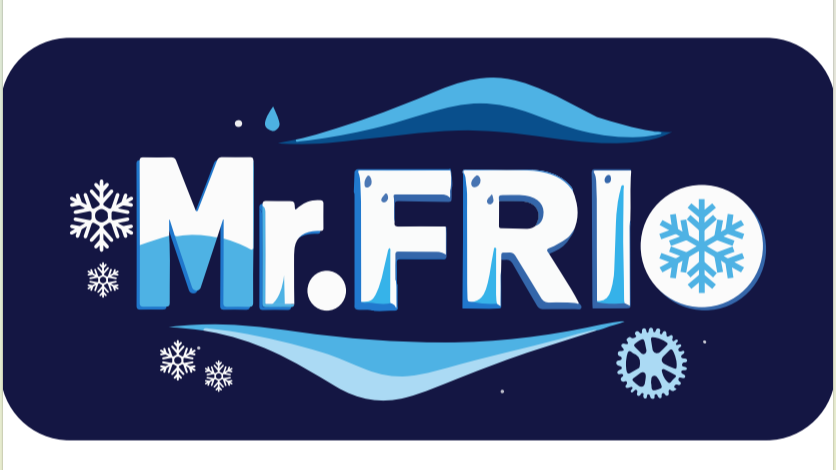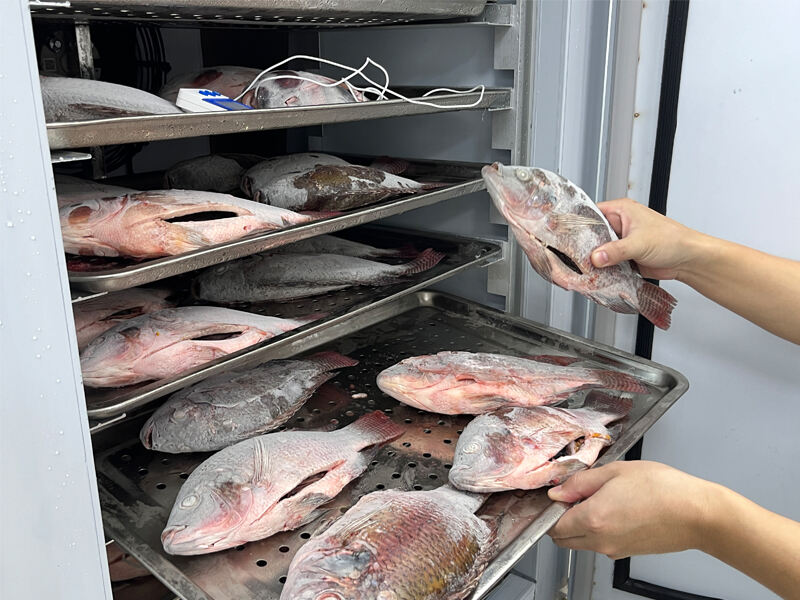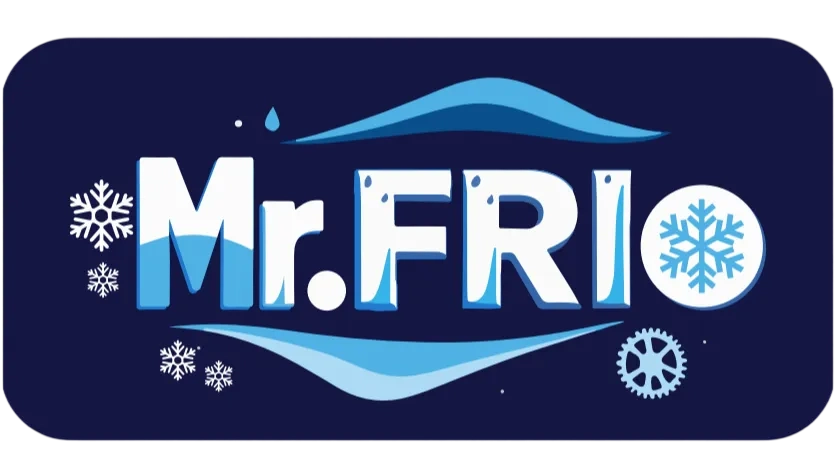What Is Flash Freezing and How Does It Work?
A flash freezer is a machine that freezes fresh seafood extremely cold (-40°F or colder) within just minutes of being caught. This process, known as blast freezing, relies on cold air circulation or immersion in liquid nitrogen to freeze the fish’s tissue so quickly that it cannot form ice crystals. WHOOSH SEAFOOD BLAST FREEZES AT -40F ZERO, the optimal speed and scale of freezing under which cellular structures are not compromised (as they would be with slower freezes), ensuring nothing is lost from that fresh caught flavor. The process will usually also include the use of a vacuum sealer to prevent oxidation and freezer burn.
The Role of Rapid Freezing in Minimizing Ice Crystal Formation
Seafood is big business in both Australia and New Zealand, but thanks to slow freezing processing methods, water molecules are free to cluster into large ice crystals that puncture cell walls as well as break down texture. The very rapid temperature reduction of flash freezing results in small, uniform ice crystals which do not rupture delicate muscle fibers. Studies demonstrate that cellular disruption associated with slow-frozen seafood may cause an edible yield reduction of up to 15% as a result of drippage during thawing.
Flash Freezing vs. Conventional Freezing: A Quality Comparison
| Factor | Flash Freezing | Conventional Freezing |
|---|---|---|
| Freezing Time | 2–10 minutes | 4–24 hours |
| Ice Crystal Size | Microscopic (<0.1 mm) | Large (>0.5 mm) |
| Texture Retention | Maintains firmness | Risk of rubbery or grainy texture |
| Nutrient Loss | <5% vitamins preserved | Up to 40% vitamin C degradation |
Flash-frozen seafood retains 90% of its original flavor compounds compared to 60–70% in conventionally frozen products.
Preservation of Texture, Flavor, and Nutritional Value in Flash Frozen Seafood
Locking in Freshness: How Flash Freezers Maintain Flavor and Texture
By rapidly chilling seafood to -40°F (-40°C), flash freezing preserves cellular structures through tiny ice crystals that avoid puncturing cell walls. Benefits include:
- Texture retention: Seafood mirrors fresh-caught firmness and elasticity.
- Flavor preservation: Volatile aroma compounds remain intact.
- Moisture control: Up to 30% less drip loss occurs during thawing (Journal of Food Science, 2022).
Nutrient Retention and Cellular Integrity in Rapidly Frozen Seafood
Flash freezing safeguards vitamins, minerals, and proteins, retaining:
- 98% of vitamin B12 versus 85% in conventional freezing
- 95% of omega-3 fatty acids after 6 months
- Native protein structures for nutritional bioavailability
A 2023 meta-analysis of 17 fisheries studies confirmed nutrient profiles equivalent to fresh catches for 12+ months when stored at consistent sub-zero temperatures.
Extending Shelf Life and Enhancing Food Safety with Flash Freezing
Maximizing Seafood Shelf Life Without Quality Loss
Flash freezers extend shelf life up to 12 months by cooling products to -35°F within minutes. Industry research shows 95% texture and moisture retention after 8 months (FoodTech Analytics, 2023), reducing spoilage-related waste by 60%.
Microbial Inhibition Through Rapid Temperature Reduction
Flash freezers bypass the "danger zone" (40°F–140°F), cooling seafood to -10°F in under 90 minutes to disrupt pathogen reproduction. USDA guidelines confirm this reduces viable pathogen counts by 99%.
Cryogenic Freezing with Liquid Nitrogen: The Premium Flash Freezing Method
Why Liquid Nitrogen Freezing Outperforms Mechanical Methods
Liquid nitrogen freezers operate at -196°C, achieving full freezing in under 10 minutes (Food Engineering Journal, 2023). Advantages include:
- Microscale Ice Crystals: Retains 98% cellular integrity versus 72% in mechanical freezing.
- Bacterial Suppression: Reduces contamination risks by 89% (Marine Safety Report, 2023).
- Energy Efficiency: Uses 40% less energy per ton than mechanical systems.
| Parameter | Mechanical Freezers | Liquid Nitrogen Freezers |
|---|---|---|
| Freezing Time | 4–12 hours | 2–8 minutes |
| Avg. Temp | -30°C | -196°C |
| Energy Use/Ton | 48 kWh | 29 kWh |
Superfrozen Seafood: Meeting High Standards in Premium Markets
Cryogenic flash freezers enable:
- 24-month shelf life with near-zero enzymatic breakdown
- Chef-grade versatility: 83% of Michelin-starred kitchens use cryogenically frozen seafood
- 95% retention of vitamin D in cod liver after 18 months versus 62% in blast-frozen samples
Commercial and Culinary Advantages of Using a Flash Freezer for Seafood
Reducing Waste and Improving Supply Chain Efficiency
Flash freezing reduces spoilage rates by 27% (USDA, 2022) and lowers transportation costs by 18-30% by eliminating expedited shipping needs.
Chef Insights: Why Flash Frozen Seafood Performs Better in Kitchens
82% of chefs prefer flash-frozen seafood for consistent texture and flavor retention (Culinary Institute of America). Benefits include:
- 40% faster prep times with pre-portioned cuts
- FDA-recognized parasite inactivation for raw dishes like ceviche
FAQs
What is flash freezing?
Flash freezing is a rapid cooling technique that involves freezing seafood to extremely cold temperatures quickly, usually within minutes, to preserve texture, flavor, and nutrients better than conventional freezing methods.
How does flash freezing benefit seafood quality?
Flash freezing minimizes ice crystal formation, preserving the cellular structure of the seafood, which maintains its flavor, texture, and nutritional value.
What is the difference between mechanical and liquid nitrogen freezing?
Liquid nitrogen freezing is quicker and operates at much lower temperatures than mechanical freezing, generally resulting in better retention of cellular integrity, reduced bacterial contamination, and greater energy efficiency.
Can flash frozen seafood match fresh catches in terms of nutrient profile?
According to research, flash frozen seafood can have nutrient profiles equivalent to fresh catches for over 12 months when properly stored.
Table of Contents
- What Is Flash Freezing and How Does It Work?
- The Role of Rapid Freezing in Minimizing Ice Crystal Formation
- Flash Freezing vs. Conventional Freezing: A Quality Comparison
- Preservation of Texture, Flavor, and Nutritional Value in Flash Frozen Seafood
- Extending Shelf Life and Enhancing Food Safety with Flash Freezing
- Cryogenic Freezing with Liquid Nitrogen: The Premium Flash Freezing Method
- Why Liquid Nitrogen Freezing Outperforms Mechanical Methods
- Superfrozen Seafood: Meeting High Standards in Premium Markets
- Commercial and Culinary Advantages of Using a Flash Freezer for Seafood
- FAQs


